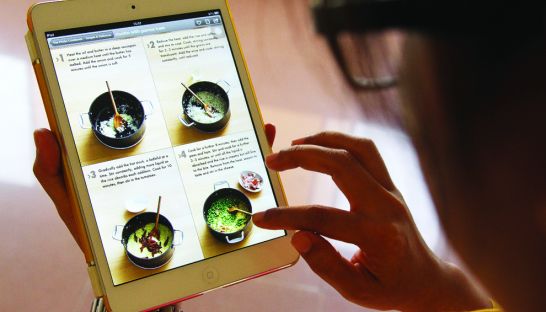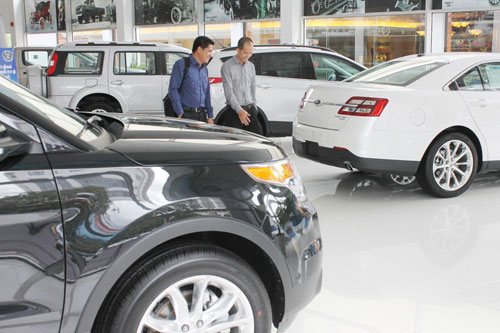Market for tablets still small
Market for tablets still small
A self-described “techy”, Justin Lin, 30, has two tablets: Apple’s iPad and the Nexus7, made by Taiwanese electronics company Asus.

Lin, an IT auditor, said he paid more than $500 for the iPad from US-based Apple because of its consistent quality and long battery life. He bought the $200 Asus for a more pedestrian reason.
“It’s so cheap, why not?” he said.
Technologically speaking, Lin is something of an outlier. Cambodia is one of the smallest markets for the portable touch screen computers in Southeast Asia, market research shows.
A smaller population means smaller sales, but a lack of brand choices and price options also pose challenges.
While tablet sales in Cambodia have doubled over the past two years, figures are lagging compared with the region, according to Gerard Tan, regional account director for digital technology at Singapore market research firm Gfk Asia.
Tablet sales in Cambodia totalled $14 million between June 2012 and May 2013, doubling from $7 million during the previous 12 months, Tan said.
At the end of 2012, sales of the devices in Malaysia reached $415 million.
“There are only an estimated six brands selling in Cambodia, which is considerably less than other markets,” Tan said.
And among those brands, which include Asus, Dell, Acer, and Huawei, both Apple and Samsung dominate market share, store owners estimate.
Kouy Sonak, general manager of Anana Computer in Phnom Penh, said Cambodia is still playing catch up with the rest of Southeast Asia.The country, he said, can’t compete with Malaysia and the Philippines because customers aren’t as tech savvy, and “our population is a small fraction of numbers in those countries”.
By his calculations, the total number of tablets sold in Cambodia since the devices were introduced is less than the units that moved off shelves in Malaysia last year.
Chap Makara, assistant to the director at electronics retailer Ktop in Sorya Shopping Centre, said since last October, tablets made up less than a quarter of overall sales at the store.
He declined to reveal figures for specific brands but said Apple and South Korea-based Samsung are Ktop’s best sellers. He added that Samsung has a competitive edge because they offer a wider range of products at different prices.
“If someone wants a high-end tablet, they can buy a Samsung for over $500. If they want a lower-end product, Samsung offer tablets starting at $250,” Chap said.
In Chap’s view, Cambodians don’t see tablets as “an investment to help them save time and money”, he said. “A tablet simply for entertainment is not worth the money.”
For those who can afford tablets, either on their own or through generous family members willing to foot the bill, entertainment is the sole purpose.
University friends Soa Beng Chheng, an 18-year-old finance and banking student, and 20-year-old Ma Chiny, who studies English, said they prefer surfing the web and playing computer games on their iPads to doing schoolwork.
At one of several branches for authorised Apple dealer iOne in Phnom Penh, associate marketing manager Damaityma Kao said the tablet is usually an add-on to an existing computer or smartphone, and customers don’t value it for functionality.
“IPad sales are growing much faster than iMac and MacBooks, but it is an entertainment device. Its demand will never replace that of computers,” Kao said. “It may be a cheaper temporary alternative to a MacBook, but the functions are very different. A tablet can’t replace a laptop for work purposes.”
But the device is still cheaper than an iMac, which starts at about $1,300, leaving some to make due.
Phnom Penh International University student Hok Longdy, 22, says he uses his iPad for research and to complete assignments because he can’t afford a laptop.
Hok likes the mobility of the iPad, and will buy the MacBook Pro when he has the money.
“The programs I would use on the MacBook are also on the iPad,” he said. “It is good enough for now.”
phnompenh post
















